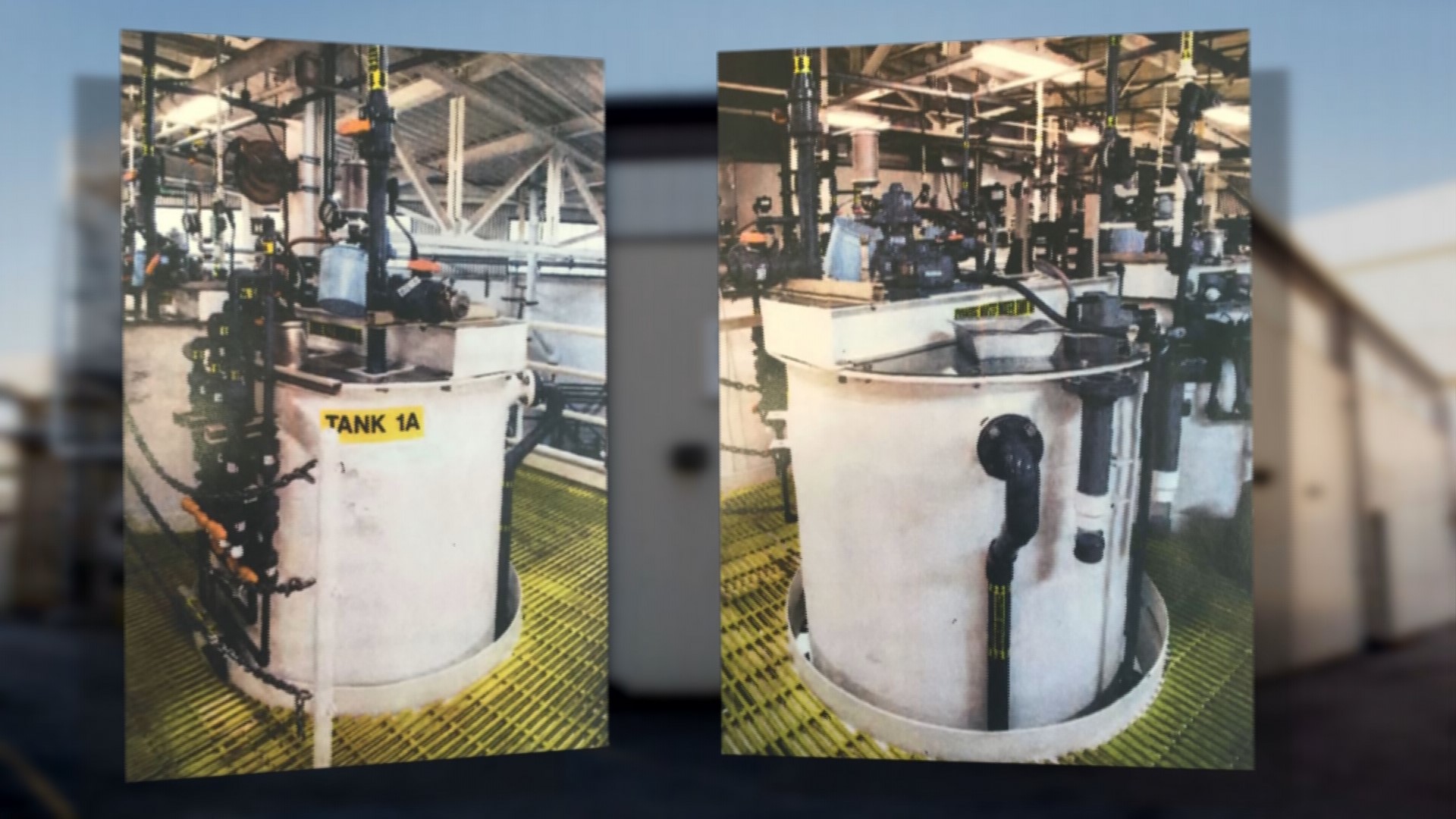The KING 5 Investigators have learned that five years after closing the case, the US Occupational Safety and Health Administration (OSHA) has reopened its inquiry into alleged toxic chemical exposures to a group of employees at the Puget Sound Naval Shipyard (PSNS).
“I’m really thankful that it’s gotten to the level that it’s not going to be brushed under the rug (anymore),” said Kevin Albert, a former PSNS supervisor who now suffers from stomach issues and reactive airways disease.
Several doctors, including specialists from Harborview, have concluded his conditions are the result of exposures at PSNS.
“I am so thankful that it’s finally gotten to the point where they can’t ignore us. They can’t just not call us back and ignore us. And the truth is going to come out and there’s nothing they can do about it.”
In the continuing investigation "Seven Years of Cyanide," KING 5 revealed through an analysis of hundreds of the Navy’s own records that, from 2006 to 2013, PSNS opened and then operated a wastewater treatment facility on the base that lacked key safety features to keep technicians safe.
Documents showed pipes leaking with lethal agents such as cyanide water and hexavalent chromium, and chronically broken safety systems put workers in harm’s way. Other essential safety features either didn’t work or weren’t installed at all; such as lids on top of tanks holding poisonous liquids.
“The (treatment plant) was commissioned with open top tanks, (even though) the Architecture and Engineering (AE) drawings specifies (sic) tank covers. It is unknown why no tank covers were installed,” wrote Navy investigators in June, 2013. “Additionally, there were chronic equipment deficiencies that required manual manipulation (dangerous workarounds) of the plant versus utilizing the automated features for treating cyanide."
OSHA received a complaint about the unsafe condition of the plant and employees being exposed to harmful levels of chlorine gas in 2013. OSHA representatives came to investigate. But KING 5 has found PSNS safety managers gave misinformation to the federal investigators about the toxic exposures.
In an October, 2013 letter written to OSHA’s area director based in Bellevue, the shipyard said the plant had no documented exposures of employees being exposed to higher than acceptable levels of chlorine gas and that employees had never complained of symptoms of that type of exposure.
“PSNS…is confident that its employees have not been exposed to chlorine gas levels at or near (unsafe and illegal levels),” wrote Michael Heesacker, the PSNS official who oversaw the Environmental, Safety and Health Office at the time.
“Chlorine gas has strong olfactory properties and would produce a severe physical reaction at (an unsafe) level. No such reaction has been reported by employees assigned to (the plant),” wrote Heesacker.
The KING 5 investigators have obtained internal Navy records showing there had been plenty of documented warnings of unhealthy working conditions and exposures to harmful levels of poisons prior to OSHA’s visit in 2013.
On February 4, 2012, an Environmental, Safety, & Health Deficiency Report (ESHDR) detailed an event where the plant was evacuated after an operator “had his breath taken away” and that “monitoring by the fire department identified high levels of chlorine adjacent to the tank and in the pit.” The ESHDR was signed by Jeff Cizek, a PSNS Hazardous Material/Air Branch manager.
On March 4, 2012, while processing water for cyanide and metals, a plant operator and a supervisor had to evacuate when their breath was taken away. According to an internal Navy investigation, responding firefighters took air samples that measured three times what is considered “Immediately Dangerous to Life or Health (IDLH)” for chlorine gas.
“It scared me, I thought I was gonna die. I couldn’t breathe. I was (choking), I couldn’t even get a breath,” said Darrick Freeman, a treatment plant operator who said he ran out of the plant as fast as he could that day.
On November 26, 2012, an ESHDR signed by Jeff Cizek described an event where the building was evacuated due to “chemical overexposure to multiple (people).” A plant mechanic, tank chemical coordinator and a supervisor all experienced severe symptoms of chemical exposure including “asthma-like symptoms such as shortness of breath and dizziness,” “burning in (the) eyes and throat,” “burning eyes and a sore throat,” and “coughing up fluid from (the) lungs” that lasted for three days. The Navy review found that the three employees “were exposed to chlorine gas above the OSHA (legal limits) and may have been exposed to hydrochloric acid above the OSHA (limits) as well.”
After the evacuation, three responders who came to test the air were exposed as well. According to internal Navy documents obtained by KING the responding personnel “were exposed to chlorine gas above the OSHA permissible exposure limit.” The testers “may also have been exposed to hydrochloric acid above the OSHA (permissible limit).”
The details outlined in these documents are in stark contrast to the Navy’s statements to OSHA and to KING 5 including “there has not been any exposure above permissible levels.”
“The bottom line is we were all being poisoned and once they realized it they tried to cover it up and I don’t understand how they can even sleep at night,” said Albert.
Since January, OSHA has been collecting documents that weren’t turned over in 2013. After seeing the volume of records related to the unsafe conditions of the plant one investigator said to KING 5, “we’ve got a lot of work to do.”


